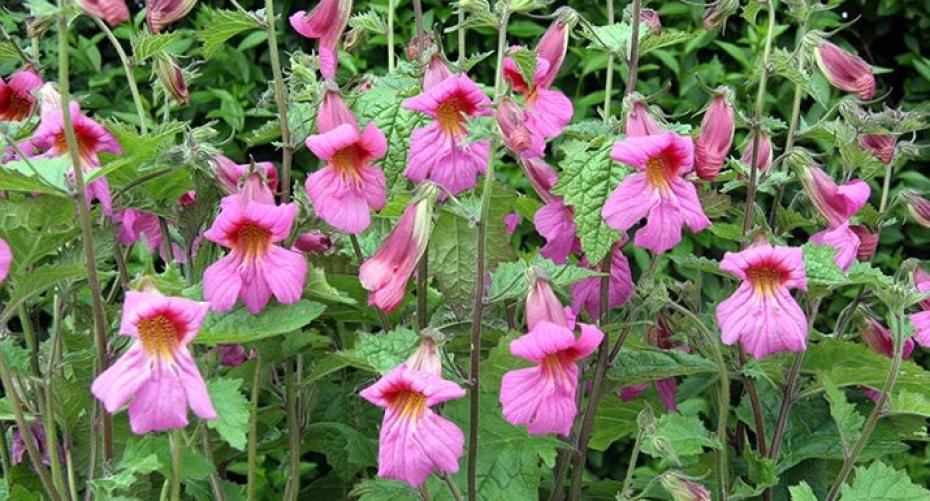Have flowers from April to Autumn with Rehmannia 'Magic Dragon'
Rhemannia, a perennial herbaceous plant and sometimes known as the Chinese Foxglove, is a genus of six species all originating from China. Rehmannia ‘Magic Dragon’ is a cross between the tall Rehmannia elata and the shorter R. glutinosa. It was introduced by David Tristram after approximately 8 years of selective breeding. It grows to a height of 70cm (28”) with flowers 6cm (2.5”) across. It flowers all summer and into the autumn. The roots are a staple of Chinese herbal medicine, being used for arthritic conditions, tinnitus and hearing loss. It is also a rich source of vitamins A, B, C and D.
Position
It needs a well-drained humus rich soil in a sheltered spot, but not north facing. It is tolerant of any soil pH. It can stand low temperatures but in a harsh winter it may be necessary to either lift it and keep somewhere sheltered, dry and frost-free or protect the crown with an up-turned hanging basket packed with straw or sheep’s wool and pegged down to the ground.
Planting
Plant to the same depth as in the pot and enrich the hole with a slow release balanced fertiliser. If your soil is clay based it will be necessary to incorporate some horticultural grit and good quality peat-free compost to enhance the drainage. It will also be necessary to lift the plant in winter as it will not survive sitting in cold wet soil.
Aftercare
Keep deadheading over summer to encourage a succession of flowers. If it starts to look as if it is running out of steam by mid-summer just cut back to the ground and you should get a second flush of growth and flowers lasting well into the autumn. Feed with a balanced fertiliser in early spring.
Pests and diseases
It is relatively trouble free, but like most plants needs to be protected from slugs and snails.
It is susceptible to rotting in a warm, wet winter so be prepared to lift it and place it somewhere cool, dry and frost-free.
Fungal diseases can be a problem in damp conditions so make sure there is an adequate airflow around the plant. Take off any leaves showing signs of mildew and destroy, don’t put them on the compost heap. Spray the rest of the plant to try and prevent it spreading. Make sure to clear up any dead, fallen leaves and destroy as they will harbour the spores ready to re-infect the following season.


